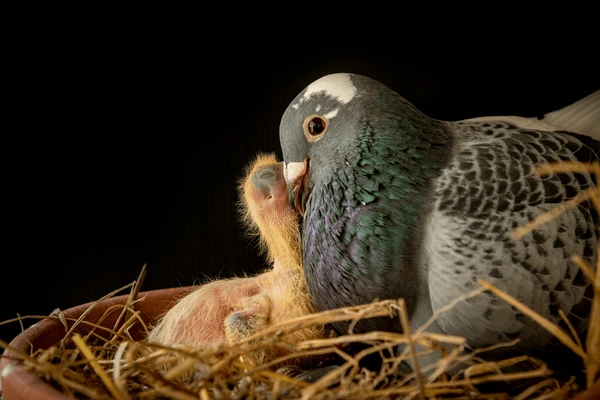A Chilling Sight: Migratory Birds Darken the Skies Over Rome
Rome, the Eternal City, is renowned for its stunning architecture, rich history, and vibrant culture. But recently, the ancient city was cast in a different light—a foreboding one—as migratory birds darkened the skies in a scene that was as mesmerizing as it was eerie. This unexpected spectacle has left both locals and visitors in awe, sparking discussions about the mysterious nature of nature itself.

The Scene Unfolds
On a recent evening, as the sun dipped below the horizon, the skies over Rome were transformed into a dramatic canvas. Millions of migratory birds, en route to their wintering grounds, converged on the city, their dark, fluttering forms filling the sky. The once clear blue expanse was overtaken by a swirling mass of feathers, casting an unusual shadow over the ancient city.
The sight was both breathtaking and unsettling. The sheer scale of the bird migration created a visual spectacle that was almost apocalyptic in its intensity. As the birds moved in synchronized patterns, they painted the sky with a hauntingly beautiful choreography that seemed to blend the natural world with the historical ambiance of Rome.
Why Such Phenomena Occur
Migratory birds typically travel in large flocks to navigate and protect themselves from predators. This phenomenon, known as “murmuration,” is most commonly associated with starlings but can involve various species. The birds’ synchronized flight patterns are thought to be a strategy to confuse predators and stay together during long journeys.
In Rome, the sheer number of birds and their unusual density might have been influenced by several factors, including changes in weather patterns, availability of food sources, or disruptions in their usual migratory routes. The city’s location and urban environment might have inadvertently provided a temporary haven for these birds.
Impact on Rome and Its Inhabitants
For the people of Rome, the arrival of such a massive flock of birds has been a mixed experience. While the sight has been a source of wonder and fascination for many, it has also raised concerns about the impact on the city’s infrastructure and daily life. The birds’ presence has led to increased cleaning efforts, as their droppings can cause damage to historical monuments and public spaces.
Local authorities are monitoring the situation closely, balancing the need to manage the environmental impact with the desire to preserve the unique spectacle that has captivated so many. The event has also sparked conversations about the broader implications of such migrations on urban environments and the natural world.
The Broader Significance
The eerie scene of migratory birds darkening the skies over Rome serves as a powerful reminder of the intricate and often unpredictable relationship between nature and urban life. It underscores the resilience and adaptability of wildlife, as well as the need for cities to accommodate and respect the natural processes that intersect with human environments.
As Rome continues to experience the effects of this avian invasion, the city remains a testament to the beauty and mystery of nature’s wonders. This extraordinary event not only highlights the splendor of migratory patterns but also prompts reflection on how we coexist with the wildlife that shares our world.

Conclusion
Rome’s recent skyward transformation into a canvas of fluttering wings is a striking example of how nature can both awe and unsettle. As the city adjusts to this dramatic event, it reminds us of the profound connections between our urban spaces and the natural world. In the end, it’s a compelling reminder that even in the heart of a bustling metropolis, the forces of nature remain as powerful and unpredictable as ever.






